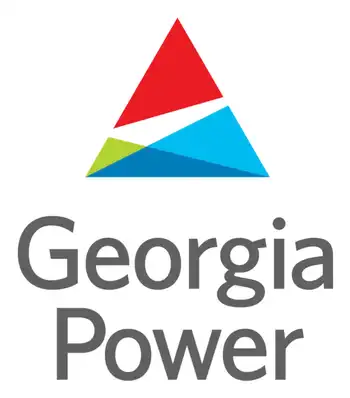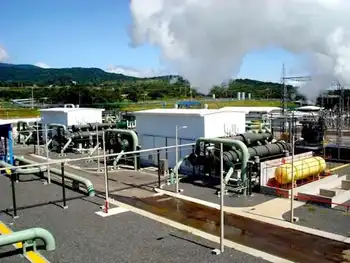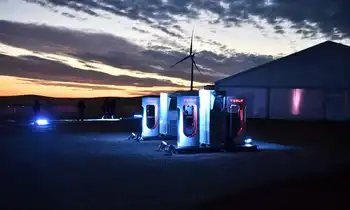Alternate-energy scramble on across West
By Associated Press
CSA Z462 Arc Flash Training - Electrical Safety Essentials
Our customized live online or in‑person group training can be delivered to your staff at your location.

- Live Online
- 6 hours Instructor-led
- Group Training Available
In Utah, state officials are fielding various combinations of energy proposals, a list that includes solar and geothermal installations and an energy storage project that would turn salt caverns into a kind of giant battery. The caverns would hold compressed air when they're not storing natural gas.
Together, the 15 projects in the works, planned or being talked up amount to "a land rush of alternate energy" projects, said John Andrews, the No. 2 official at Utah's trust-lands administration, which manages about 5,500 square miles of land left over from a federal grant at statehood.
It's a land rush across much of the West, which offers an abundance of wide-open public lands, steaming geothermal resources, blazing sunshine and unconstrained wind corridors.
Scores of projects — some speculative, others well-funded and a few quirky — have surfaced with energy companies eager to take advantage of loan guarantees and tax breaks being promoted by President Barack Obama:
• In Nevada, the National Guard is planning to install solar-power panels that would serve double duty as carports at its installations, shading vehicles from the sun. This concept is called "solar parking." In addition, Nevada is looking at powering state prisons with their own solar installations.
With both projects, "We're just trying to get something on the ground quickly," Robert Nellis, supervisory land agent for the Nevada Division of State Lands. "This is low-hanging fruit. It seems like a no-brainer."
• In Arizona, the Phoenix-area utility Salt River Project will dedicate the state's first wind farm October 12 near Snowflake, a project developed by the Scottish company Iberdrola Renewables Inc. Fully developed, the Dry Lake Wind Project will sprawl across state, federal and private lands.
"We have 16 more projects in the queue, mostly solar-based with a wide variety of technology," said Jamie Hogue, Arizona's deputy land commissioner, who is making plans for a series of auctions next year for lease of some of the state's 14,500 square miles of trust lands. "There's a lot of speculation going on, as well as companies that are really interested."
Geothermal — a time-honored source of continuous power — is ramping up in California and Nevada, already the country's leading producers of steam-powered electricity.
Other companies are rushing to exploit Utah's unrealized geothermal potential on an edge of the Great Basin desert, where boiling water circulates a few thousand feet under the barren landscape.
"Geothermal is the lowest cost base-load power available today," said Shuman Moore, chief executive of Reno, Nev.-based Oski Energy LLC, which snapped up a state lease in Utah on a decommissioned geothermal site. "Nobody can build a coal or nuclear plant for a cost production any lower or even close to geothermal."
Oski Energy controls about 5.5 square miles of state, federal and private lands near Cove Fort, with enough "elbow room" to ensure competitors can't siphon off underground reserves of hot water.
A Utah company, Provo-based Raser Technologies Inc., got a jump on a nearby geothermal field earlier this year, taking just six months to fire up a modular plant.
"It's our crown jewel," Dick Clayton, Raser's chief executive, said of the so-called Thermo field. It turned out to contain so much hot water, Raser plans to bump its 10-megwatt development to ultimately 230 megawatts, a "huge leap up."
Raser is adding more and deeper wells to boost the field's output. California utilities are taking all of the power.
Utah also is quickly adding wind farms. Newton, Mass.-based First Wind is erecting 97 turbines in Utah's West desert, near Milford. It's Utah's second commercial wind farm; another project catches winds that blow down Spanish Fork canyon, near Provo, like clockwork at night.
Another half-dozen wind farms are in the application stage at Utah's trust-lands administration.
The agency, meanwhile, has awarded a lease to Access Solar Ltd. of India, a manufacturer of solar modules, for a utility-scale project near Beryl in the state's southwest corner. Five other solar farms are in the application stage.
"It's a healthy new business opportunity for us," said Andrews, chief lawyer for the trust-lands agency, which manages assets worth nearly $100 million — it still gets most of its money from oil and gas leasing.
Across the West, many energy companies are capitalizing on state mandates for alternative energy. Nowhere is the demand greater than in California, where Gov. Arnold Schwarzenegger signed an executive order last month requiring utilities to obtain a third of their power from renewable sources by 2020.
"As long as California wants energy that's not coal or oil, there's going to be this boutique energy industry," said Dave Hebertson, secretary for the Western States Land Commissioners' Association. "But it's going to take years to develop it."











